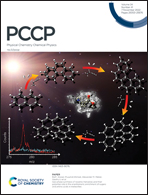An insight into the sequestration of tetra and hexavalent actinides by tri ethoxysilyl-amino-propyl-3-oxa-glutaramic acid (SAPOGA) functionalized titania†
Abstract
Silyl-amino-propyl-3-oxa-glutaramic acid (SAPOGA) functionalized titania has been synthesized for highly efficient solid phase sequestration of thorium and uranyl ions from an aqueous acidic waste stream. The XRD pattern suggested that the grafting was performed on the anatase phase, leading to a rougher surface resulting in better interaction with actinides. The successful grafting of SAPOGA bridging was confirmed using spectroscopic methods. The Langmuir isotherm and the intraparticle diffusion-based kinetics model were found to be operative with sorption capacities of 231 mg g−1 and 458 mg g−1 and rate constants of 51 mg g−1 min−1 and 48 mg g−1 min−1 for U and Th, respectively. The entropy driven sequestration process was thermodynamically favourable (ΔGU = −6.0 kJ mol−1 and ΔGTh = −9.1 kJ mol−1) and endothermic in nature. The experimentally corroborated complexation pattern was assisted by density functional theory (DFT) calculations, which gave further insight into the metal–ligand interaction.



 Please wait while we load your content...
Please wait while we load your content...